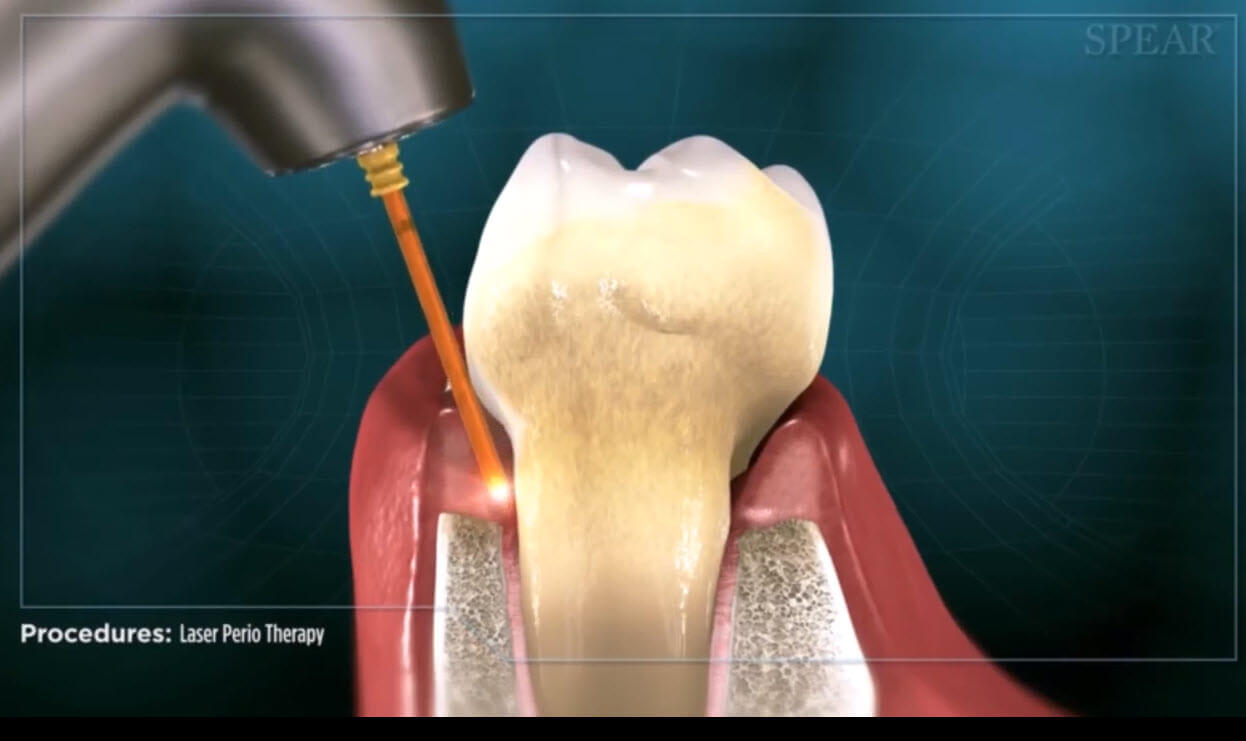Dental colleagues and patients often ask me who the ideal candidate for laser periodontal therapy is.
The fact is that any patient who shows evidence of active periodontal disease is a perfect candidate. The laser is now my first choice for the treatment of periodontal disease. The Periolase, ND:YAG laser is the only FDA-approved laser for the treatment of periodontal disease.
If a patient is showing signs of periodontal disease such as bone loss around teeth, increased probing depths, loose teeth and attachment loss, laser treatment is an ideal choice. Alternatives are traditional surgery and scaling and root planing. The Periolase accomplishes the same goals as periodontal surgery but without pain, stitches, and with minimal recession. In addition, research shows that the type of healing that occurs with the laser almost matches the original type of gum tissue insertion into roots. Frequently bone regeneration is displayed. The healing from scaling and root planning is not the original type of gum tissue insertion into roots but gum tissue adhesion. Certainly, the penultimate goal of periodontal treatment should be the reestablishment of the original type of gum and bone tissue attachment to teeth. The laser is the most conservative treatment available which can achieve that goal.
There are two patient populations for whom laser periodontal treatment offers outcomes not even possible previously. This treatment methodology can be used with patients who are on anticoagulants, while traditional periodontal surgery can be quite dangerous. It’s a much more conservative approach than traditional periodontal surgery and bleeding can be more easily controlled with the laser. This is a significant advantage for those patients who would be at risk for a cardiovascular accident if they had to stop taking anticoagulants prior to surgery. The laser has also been shown to promote the healing of chronic bone wounds associated with certain drugs used to treat osteoporosis, such as bisphosphonates. Currently, patients on bisphosphonates have an increased risk of altered bone healing following traditional periodontal treatment. Laser treatment is an excellent modality of treatment for these patients as well.
